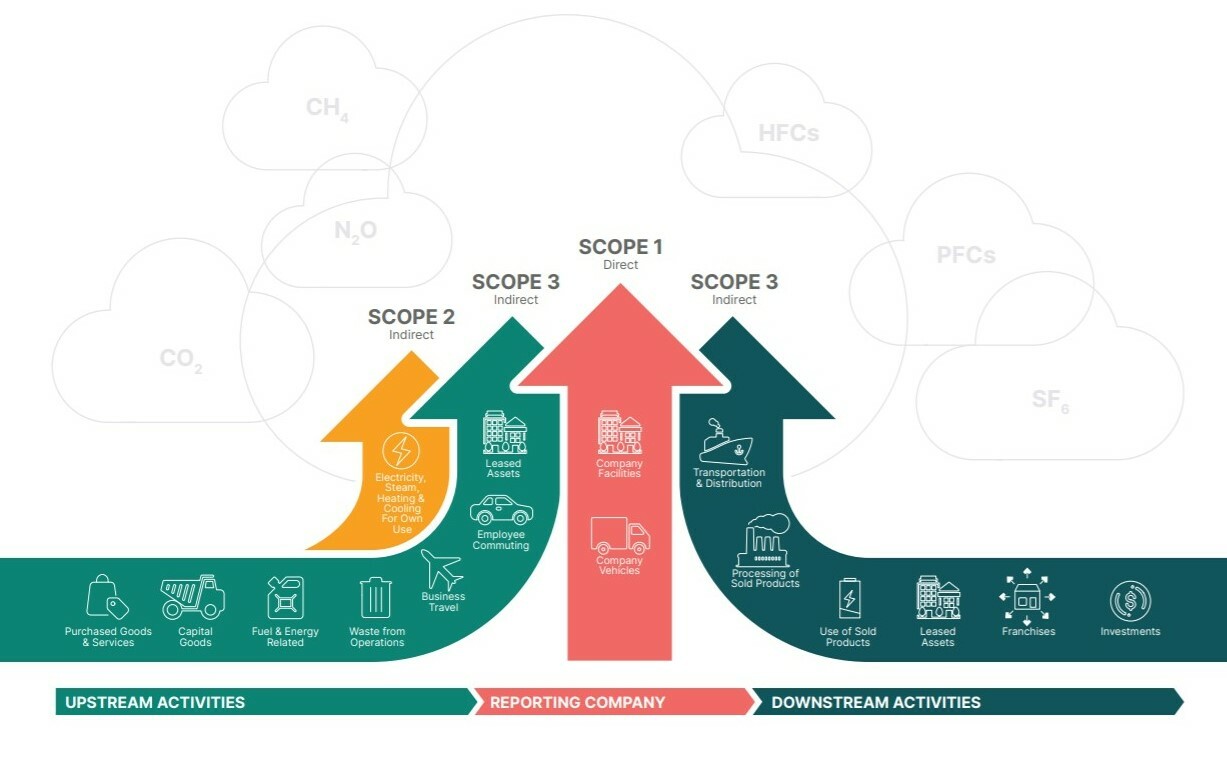Mauser Packaging Solutions was created with the principle of sustainability at its core. Throughout our network of facilities, we resourcefully manage the complete lifecycle of industrial packaging containers. However, our environmental responsibility extends beyond providing sustainable packaging to our customers and includes understanding the impact our operations have on the environment through our carbon emissions. To take the next step in our commitment to sustainability, we are launching a project to calculate our carbon footprint for the first time in the history of our global company.
Beyond our responsibility to be good stewards of the environment, there are practical reasons for investing the time and expense in calculating our corporate carbon footprint. These reasons include:
- Goal Setting –We cannot manage or improve our carbon footprint if we don’t know where we stand today. Developing a baseline calculation of our carbon footprint provides a benchmark for evaluating future performance and enables us to set goals for reducing our negative environmental impact moving forward.
- Essential for Sustainability Reporting – Company carbon footprint data is essential for Global Reporting Initiative1 (GRI) compliant sustainability reporting. GRI standards offer organizations a global common language for communicating their impacts on people and the planet, providing clean and comparable communication to customers, investors, and other stakeholders.
- Third Party Sustainability Assessments – An increasing number of customers are requesting disclosure of carbon emissions linked to our business to calculate their own scope 3 emissions. This is typically requested via invitations to participate in third party sustainability assessments such as EcoVadis2 and the Carbon Disclosure Project3 which each request carbon emissions data.
- Importance to Investors – Climate change data is a growing metric used by investors when evaluating the value of a company for potential investment.
- Preparation for Anticipated Emissions Regulations and Trading Schemes – Politics, especially in the EU, are expected to broaden existing carbon emissions trading schemes and related reporting requirements beyond the energy and electricity industries. If this happens, carbon emissions reporting will become an obligatory part of business reporting. By establishing our carbon footprint and conducting annual calculation, we are prepared to adhere to these requirements if regulations are implemented.
To establish an initial carbon footprint for the organization, we are partnering with Corporate Citizenship, a sustainability consultancy, to help us generate our first carbon footprint and facilitate annual reporting through a bespoke calculator tool. To track performance over time, a company carbon footprint is typically calculated once per year. In case of no major changes in organizational scope or processes operated, the calculation model developed for this initial calculation can be applied for annual updates by updating consumption data by emission source.

The emissions that comprise a company’s carbon footprint are categorized into three scopes. We will focus on calculating our Scope 1 and Scope 2 emissions first and expand to Scope 3 over time with input from customers and suppliers.
Scope 1 emissions refer to direct greenhouse gas (GHG) emissions produced by activities or operations that are owned or controlled by the reporting company. These emissions are created directly through energy used by company-owned equipment and vehicles.
Scope 2 emissions encompass all “upstream activities” or GHGs created by the purchase of energy. They differ from scope 1 emissions because, they occur at sources owned or controlled by the supplier.
Scope 3 emissions are generated by both “downstream activities” and “upstream activities” along the life cycle of the goods and services produced by a company. Scope 3 emissions include all activities occurring in a company's value chain, such as third-party shipment of goods, business travel, and customers using the company's products.

1Global Reporting Initiative (GRI) is a independent, international organization that helps businesses and other organizations take responsibility for their impacts, by providing them with the global common language to communicate those impacts. GRI provides the world’s most widely used standards for sustainability reporting – the GRI Standards.
2 EcoVadis is a standardized corporate social responsibility (CSR) assessment that is used by businesses to evaluate the sustainability of their organizations and supply chains.
3Carbon Disclosure Project (CDP) is a not-for-profit charity that runs the global disclosure system for investors, companies, cities, states and regions to manage their environmental impacts.

